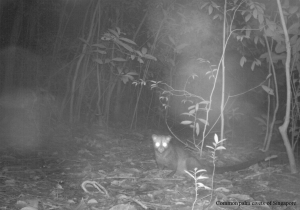In recent years, camera traps have become the must-have equipment for any wildlife research.
The camera trap is a camera encased in a box which can be configured to capture a photo when triggered by the body heat or movement of an animal. This research technique has helped to shed light on many previously unknown secretive inhabitants of the forest. The photos have allowed researchers to detect presence, count abundance and also observe the behaviour of typically shy wildlife or animals that are located in remote areas. Similarly, for a nocturnal and elusive animal like the common palm civet, the camera trap technology has allowed us to have a sneak preview of the life of a common palm civet in Singapore.
Currently, there are many conservation programmes that utilise camera traps in their studies. It is always exciting to retrieve and review the data from a camera trap because you will never know what surprises are stored within the tiny SD card.
We are especially glad that various species of civets have been occasionally photographed in camera traps around Asia. The Carnivore and Pangolin Conservation Programme based in Vietnam, has kindly shared with us three photos of small Indian civet and common palm civets captured by their camera traps.
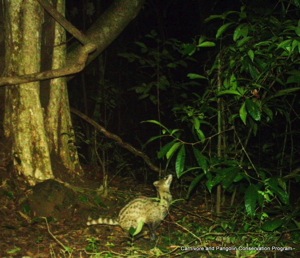
Small Indian civet
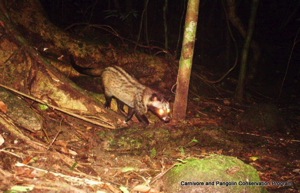
Common palm civet
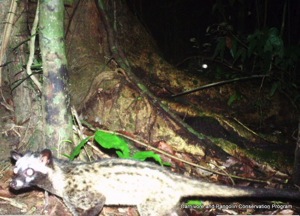
Close-up of a common palm civet
Another programme that has captured exciting civet photos is the Wildlife Conservation Society – India. They have managed to get a photo of the Brown palm civet (Paradoxurus jerdoni), a rare Western Ghats endemic species.
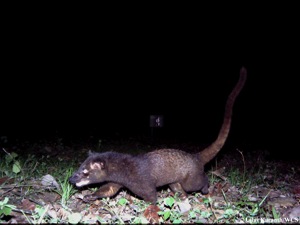
With the improvement of camera trap technology, some even have video recording capabilities. The ability to capture video has allowed the camera traps to record short animal behavioural footages. One of our favourite video clip of a common palm civet was taken by Wildlife Conservation Society in Uganda, where a palm civet was startled by a small rodent.
Camera traps can provide valuable information to help us better understand the ecology of the civet and many other species as well. The possibilities of the use of camera traps in wildlife research and conservation are limitless and there is still much work to be done. If you are interested in this field, do consider starting a local camera trap research project with relevant permits and there will be surprises awaiting you!

